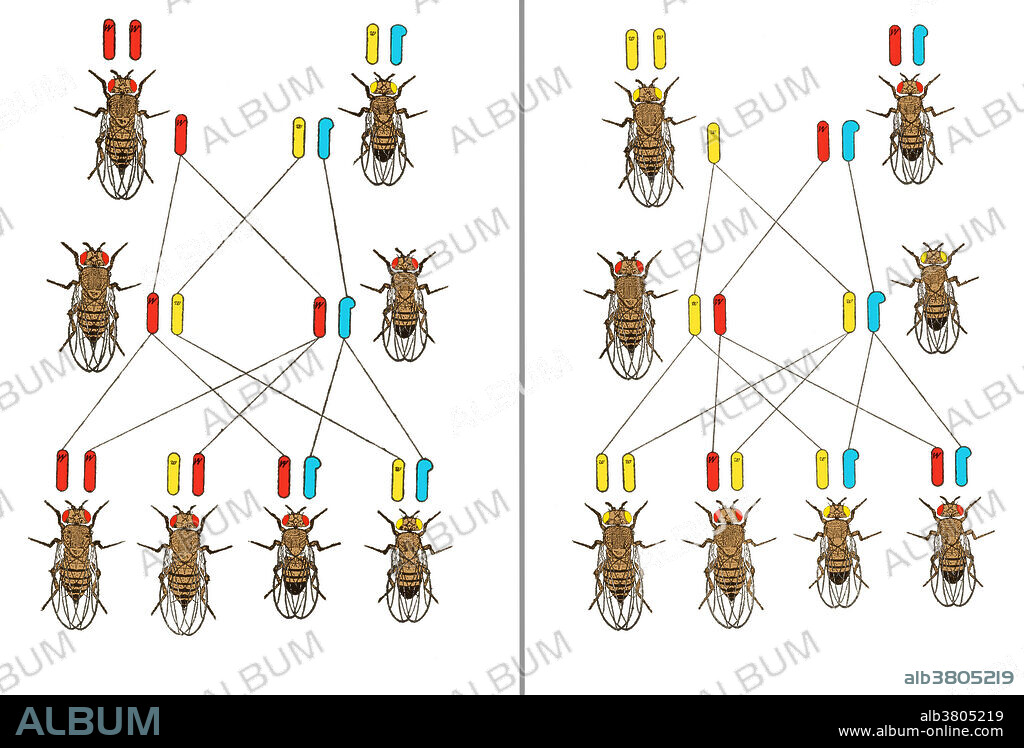alb3805219
Physical Basis of Heredity, T.H. Morgan, 1919

|
Add to another lightbox |
|
Add to another lightbox |



Title:
Physical Basis of Heredity, T.H. Morgan, 1919
Caption:
Cross between white-eyed male and red-eyed female of the vinegar fly. From The physical basis of heredity by Thomas Hunt Morgan, 1919. Thomas Hunt Morgan (1866-1945) was the recipient of the 1933 Nobel Prize in Medicine for his discoveries of the role played by chromosomes in heredity. Morgan received his Ph.D. in 1890 at Johns Hopkins University. The work that received the prize was completed over a 17-year period at Columbia University by Morgan and his students, commencing in 1910 with his discovery of the white-eyed mutation in the fruit fly, Drosophila. This led to the discovery of sex-linked inheritance, allowing chromosomes to be identified as the carriers of the hereditary material.
Personalities:
Credit:
Album / Science Source
Releases:
Model: No - Property: No
Rights questions?
Rights questions?
Image size:
5088 x 3455 px | 50.3 MB
Print size:
43.1 x 29.3 cm | 17.0 x 11.5 in (300 dpi)
Keywords:
1919 • 20 XX TWENTIETH CENTURY • 20TH CENTURY • 20TH • AUTHOR • BASE • BASIS • BIOLOGIST • BIOLOGY • BOOK • BREEDING • CENTURY • CHART • CHROMOSOMES • COLORIZED • CROSS • EMBRYOLOGIST • EMBRYOLOGY • ENHANCED • EVOLUTION • EVOLUTIONARY • FEMALE • FLY • GENES • GENETICIST • GENETICS • H • HEREDITY • HISTORIC • HISTORICAL • HISTORY • HUNT • INHERITANCE • LINKAGE • MALE • MEDICINE • MORGAN • OF • PAGE • PHYSICAL • PHYSIOLOGIE • PHYSIOLOGY • RED-EYED • SCIENCE • SCIENCE: EVOLUTION • SEX • T. H. • T. • TEXT • TEXTBOOK • THOMAS • TWENTIETH CENTURY • VINEGAR • WHITE-EYED • ZOOLOGY
 Pinterest
Pinterest Twitter
Twitter Facebook
Facebook Copy link
Copy link Email
Email

